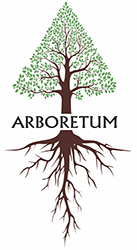Robinia pseudoacacia
Robinia pseudoacacia, commonly known in its native territory as black locust,[1] is a medium-sized hardwood deciduous tree endemic to a few small areas of the United States, but it has been widely planted and naturalized elsewhere in temperate North America, Europe, Southern Africa[2] and Asia and is considered an invasive species in some areas.[3] Another common name is false acacia,[4] a literal translation of the specific name (pseudo meaning fake or false and acacia referring to the genus of plants with the same name.) It was introduced into Britain in 1636.[5]
Large tree 20-25 (35) m high. Crohn's lace, sprawling, widely cylindrical. The diameter of the trunk sometimes reaches 1 meter. Young shoots are initially slightly pubescent, then bare, from olive-green to brilliant reddish-brown shades, in older plants, thick cracking bark of gray-brown color, with deep longitudinal cracks. The root system is powerful, core, branching (12-15 m in diameter). The roots contain many sclerenchymic elements. A remarkable feature of the roots is the symbiotic relationship with nitrogen-fixing (nodule) bacteria, which grow to form nodules, thanks to which the plant can develop well even on soils poor in nitrogen. The leaves are alternate, complex, pinnate with 9-17 oval or oblong leaflets, with stipules modified into thorns. The flowers are white, fragrant, bisexual, zygomorphic, with a double perianth in racemose inflorescences collected in a common panicle. Calyx is leafy, two-lipped. The moth corolla consists of a flag, or a sail, two wings, or oars, and a boat formed by two fused petals and covering the stamens (10, of which 9 are fused with stamens and 1 free) and a pistil formed from one carpel. At the base of the petals are nectar-bearing glands. Ovary upper. Formula of white acacia flower: Ch3L1,2 (2) T (5 + 4) 1P1. Fruit - a bean with a short peduncle, oblong-linear in shape, oblate, bivalve, multi-seeded, brown. It blooms at the age of six at the beginning of summer (May - July). Fruits in autumn in late September, often acacia beans hang on trees until the end of winter.


